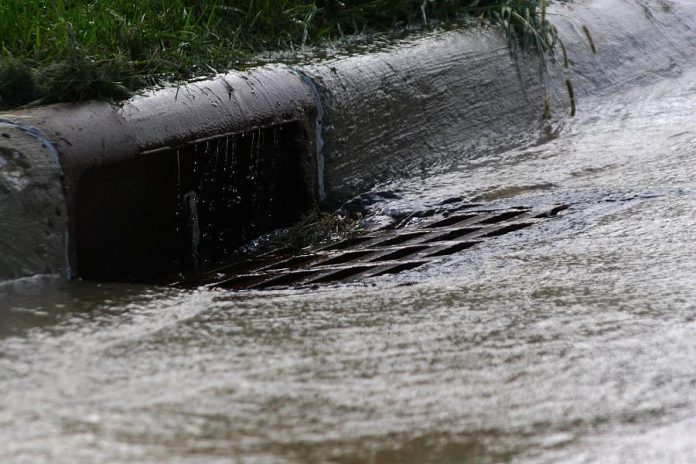
There’s been no shortage of rain this summer. The cool, wet weeks of June and July have left lawns and gardens well watered and especially lush. While gardeners are happy, those seeking sun and hot temperatures are feeling a little left out.
All of the rainy weather over the past month gives a good opportunity to reflect on where that water goes after it falls from the sky. Outside of urban areas, rainfall will slowly runoff and soak into the ground — but in an urban setting, it’s a completely different story.
In an urban environment, chances are good raindrops will hit a hard surface after falling thousands of feet from the sky. With no absorption into the ground, the volume of water quickly increases, flowing over paved surfaces and catching everything it encounters as it moves.
Eventually, the water will be channelled into the closest storm drain, snaking it’s way underground before being released once again, generally into a waterway like a lake, river or stream.
Pet feces, detergents and cleaners, spilled motor oil and other automotive fluids all can be found in storm water runoff. Whatever is on a hard surface and is light enough to be washed away will be, and eventually ends up where it shouldn’t. This is leaving a legacy of fouled water for future generations.
A recent report stated that microbeads (plastic particles smaller than 5 mm) are showing up in “alarming levels” in Canadian lakes and rivers. Storm runoff is just one source of many of these pollutants.
How can we keep our water cleaner and reduce storm water runoff?
The answer isn’t as complex as you might think, and comes down to a few simple steps we all can take at home. These include slowing the water down, allowing it to be soaked up by vegetation and soil, and keeping it clean in the first place.
1. Redirect your drain spouts
In urban neighbourhoods, most water doesn’t get a chance to be absorbed into the ground. One way to slow the flow of water is to reduce the volume of it.
If your drain spouts flow onto a driveway or other paved surface, disconnect them or shift them and allow that water to disperse onto your lawn.
Not only will your lawn will benefit from the additional water, but it will soak into the ground rather than burdening drainage systems.
2. Install a rain barrel
Another option is to install a rain barrel.
Customers of Peterborough Utilities receive a discounted price if they purchase their barrel from GreenUP.
Storing rainwater for use on dry days will cut your water consumption and allow you to water your lawns and gardens should restrictions come into place in the coming months.
3. Help rainwater soak into the ground
Increasing areas on your property that will allow rainwater to be soaked into the ground is also an important step.
If you plan on resurfacing your driveway, considering using permeable paving options that allow water to reach the ground below, while still giving you a hard surface.
Planting trees and shrubs also help as they absorb copious amounts of water through their roots.
4. Clean up after your pet
Pick up pet waste.
Four times more harmful than human waste, it gets carried off sidewalks and streets and input directly into bodies of water via storm drains, untreated.
Use compostable bags to pick up and dispose of it safely.
5. Don’t wash your car on your driveway
Washing your car on your driveway rinses whatever is on the driveway into the storm sewer.
This can be avoided by using a commercial car wash where the wastewater is treated.
Another option is to park the car on your lawn to wash it. All the water flows off the car and into the grass, eliminating the need to water later.
6. Use natural fertilizers
Spread natural fertilizers on lawns and gardens.
Fertilizers contain nitrogen, phosphorus, and potassium. When applied in granular form on compacted lawns, it is easy to lose most of it down the storm drain the next time it rains.
Excess phosphates from fertilizers can cause an algal bloom and over growth of invasive plants in the nearest lake or river.
Apply composted organic matter to well-turned beds to help it soak into the ground the next time it rains. When applying to lawns, always aerate first.
Taking small actions, like collecting water in rain barrels for later use or making an extra effort to pick up after your pet can have big results in the future.
Keeping toxic elements out of storm water runoff will lead to cleaner and healthier bodies of water for years to come.


























